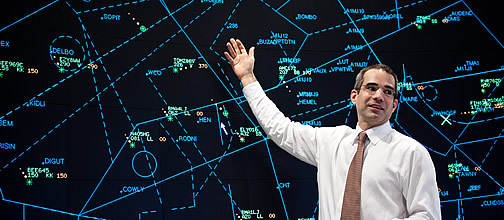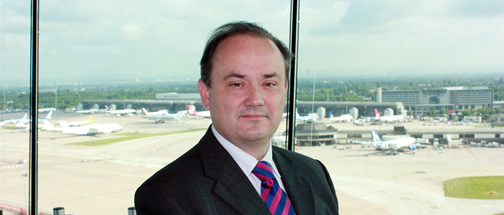What to do if you infringe controlled airspace
10 April 2014We are all aware that infringing – when an aircraft makes an unauthorised entry into controlled airspace – is an issue that cannot afford to be overlooked and needs to be taken seriously by anyone taking to the skies.
It is important to remember that intrusions, no matter how minor they may appear to be, pose a threat and risk of collision. Procedures have been developed to ensure that the risk of this happening is minimal, but the disruptive results of an infringement, have the potential to affect everyone.
Upon detection of an infringement, air traffic controllers must assume that the pilot is lost and therefore the flight path is unpredictable. They will ensure that the infringing aircraft is kept away from all other air traffic. This is done by establishing a ‘buffer’ around the offending aircraft with a radius of five miles.
Ensuring other aircraft are kept away from the infringer begins a chain reaction that will see aircraft being directed to holding patterns, re-routed and potentially aircraft can be prevented from taking off and landing, causing significant disruption to flights and for passengers.
Some of the effects of doing this were discussed in my blog post earlier in the year, which detailed how infringements are everyone’s problem.
The video below shows an imaginary infringement with the aim of demonstrating best practice for pilots, including the correct procedures that should be followed if they find themselves wandering where they shouldn’t.
You can see how quick and easy an infringement is to deal with when a controller is able to contact the pilot via a transponder. Having it turned on and set to Mode Charlie (ALT) with the local Frequency Monitoring Code (listening squawk) entered, allows a controller to get in touch and provide corrective action to re-route the aircraft causing less disruption for all other airspace users.
However not all aircraft are fitted with transponders. If you are flying without one, simply listening in to the local frequency can help to resolve an infringement situation.
Although this method doesn’t allow controllers to directly contact you in the event of an infringement, listening in to the frequency means that you will be able to hear if a situation has arisen. If you recognise a transmission that corresponds with your position, you are able to take avoiding action much sooner.
The video was produced by City Airport & Heliport and Mainair Flying School in Manchester in conjunction with the NATS air traffic control team at Manchester Airport, it was part of the reason why they both received the NATS Infringement Prevention Award earlier this year.
The award aims to recognise flying clubs and airfields that go the extra mile to highlight the issue of infringing controlled airspace, and alongside this video, the airport and flying school provide specialist safety events and additional training for infringing pilots, illustrating exactly why they are worthy winners.
More information about the award or how to nominate a club or school can be found on the NATS website.
Comments
Please respect our commenting policy and guidelines when posting on this website.




11.04.2014
12:33
G Presley (@greghm88)
Great Video! I wish there would be more like this.
18.05.2014
10:22
Hafiz Ally Lalani
Very nice video!